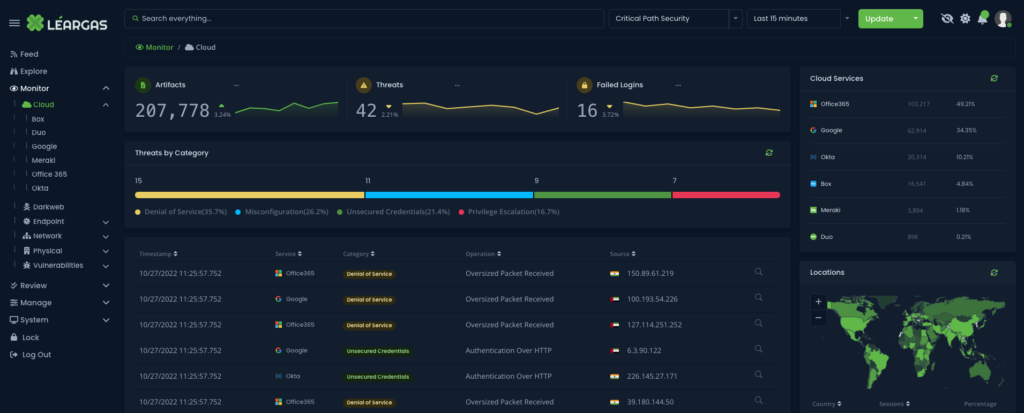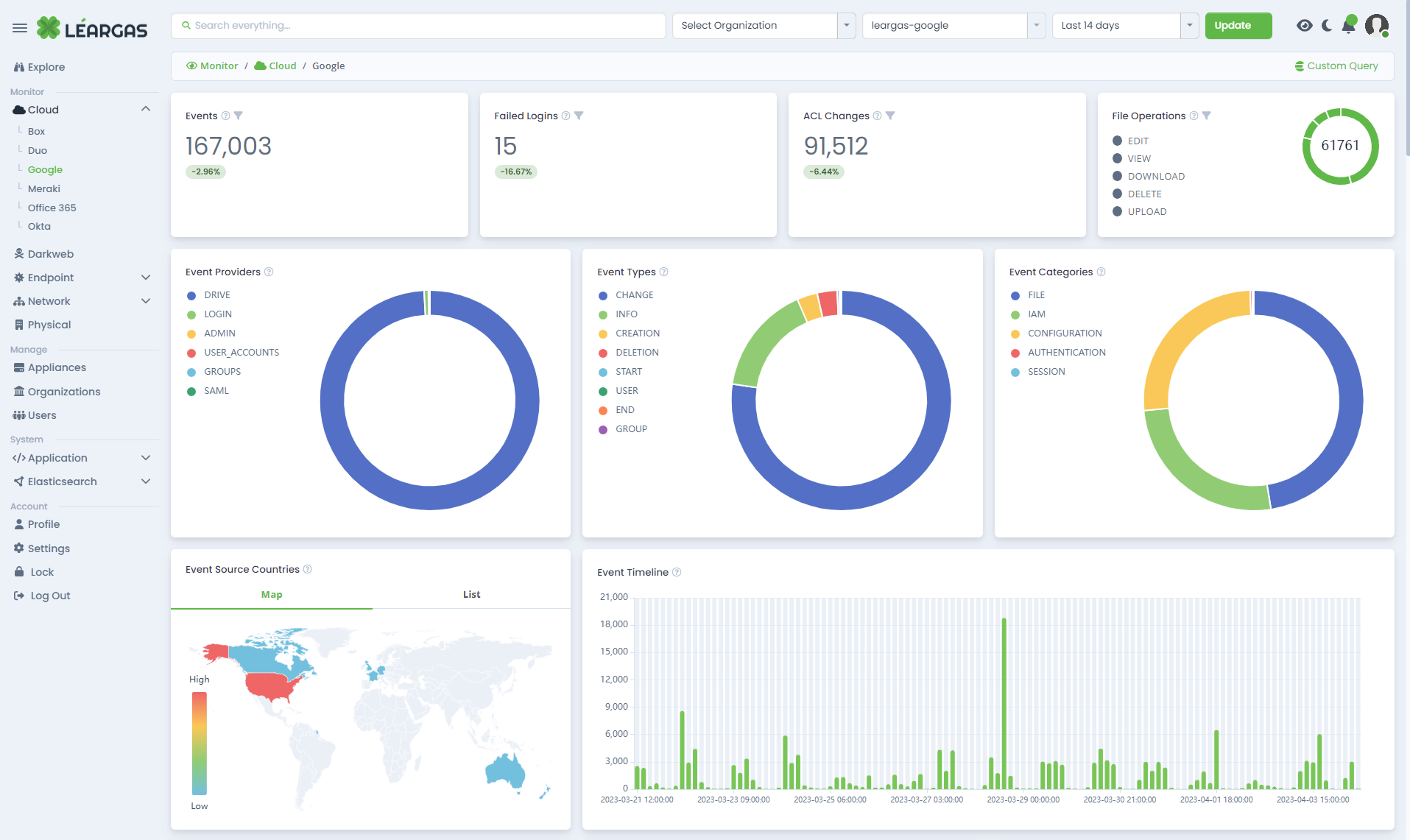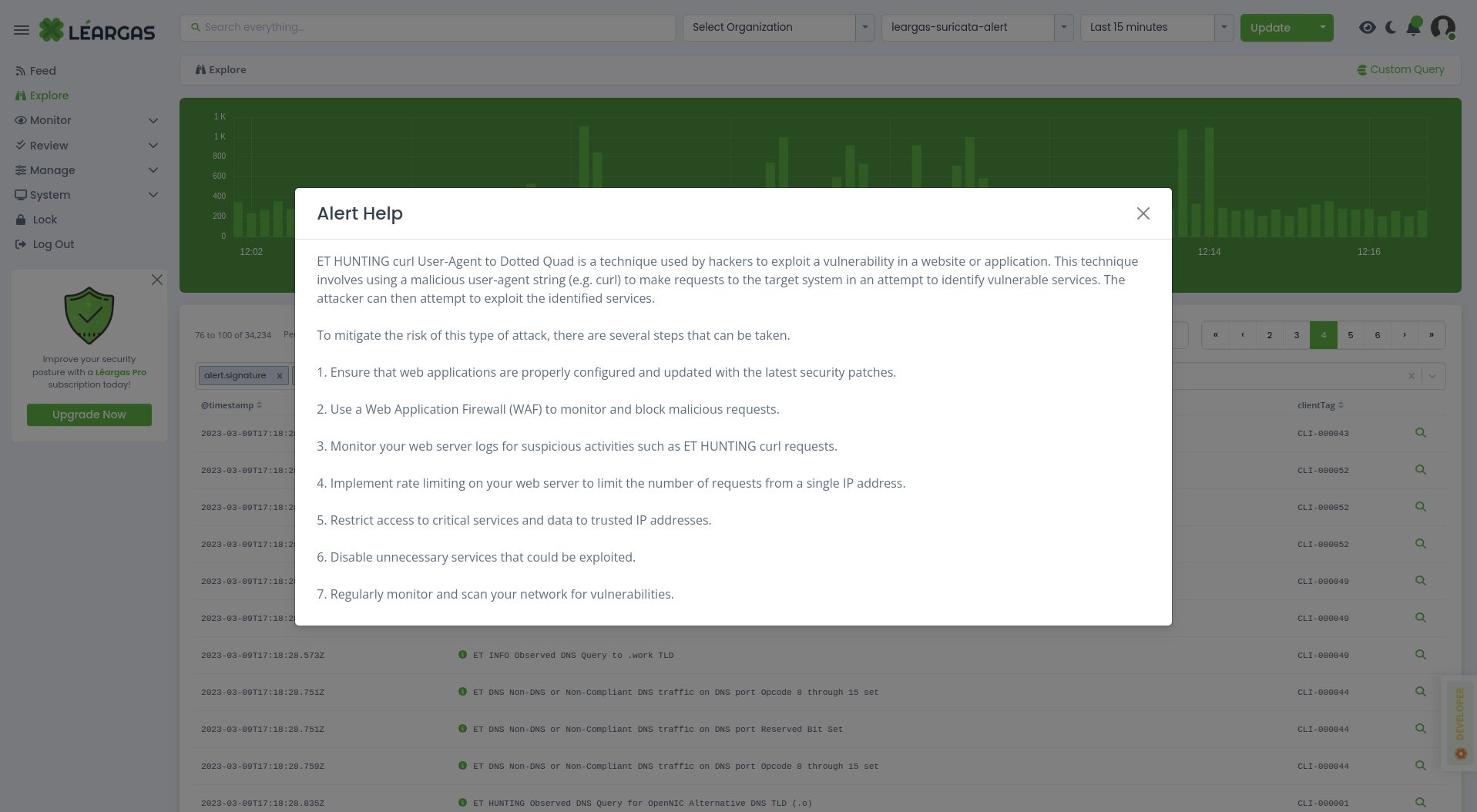Artificial Intelligence (AI) has made significant advancements in recent years, with ChatGPT by OpenAI emerging as one of the most popular language models. Its potential to enhance productivity and efficiency across a wide range of tasks is undeniable. However, as large organizations increasingly adopt this technology, it is essential to ensure responsible and ethical usage. In this blog post, we discuss the key points to consider when using ChatGPT in a large organization, focusing on security, reliability, and ethical concerns.
Continue readingLéargas Security with AI – The Dawn Of A New Age In Cybersecurity
For a long time, “artificial intelligence” has been a popular buzzword in the cybersecurity sector, boasting solutions capable of detecting suspicious network activities, rapidly understanding the situation, and assisting in incident response upon an intrusion. However, the most effective and reliable services so far have been machine learning algorithms designed to identify malware traits and other questionable network behaviors. Now, with the increasing availability of generative AI tools, Léargas Security has finally developed a service for security professionals that lives up to the hype.
Continue readingLéargas Security Sponsors NRECA 2023 Co-op Cyber Tech
Léargas Security, a leading cybersecurity firm, has made a name for itself by providing top-notch security solutions and services to clients worldwide. With a focus on innovation, Léargas Security stays ahead of emerging threats by continuously updating its strategies and techniques. The company’s dedication to excellence has made it the perfect partner for NRECA in the 2023 Co-Op Cyber Tech Conference.
Continue readingLéargas Security with AI: The Cost Factor
With the increasing number of cyber-attacks and the ever-changing threat landscape, there is a growing demand for cybersecurity analysts who can effectively protect computer systems and networks. However, the shortage of skilled cybersecurity professionals is a major challenge that many organizations face. Artificial Intelligence (AI) has emerged as a potential solution to this problem, and its importance in the strategic shortening of skills gaps in cybersecurity analysts cannot be overstated. That is why Léargas Security has leveraged ChatGPT for strategically shortening the knowledge gap.
Continue readingWhat Is SecOps and What Is The Value Of SecOps To Organizations?
The Importance of Normalization and Scoring of Threat Intelligence Artifacts
In the present-day, interconnected world, businesses confront an expanding threat landscape. To safeguard themselves from cyber threats, organizations rely on threat intelligence, which is one of the most valuable tools available. However, the effectiveness of threat intelligence hinges on the quality of its data. That’s why normalization and scoring of threat intelligence artifacts are two indispensable procedures that guarantee high-quality data.
Continue readingVisibility and Log Fidelity – Recommendations
Inline Detections and Hunting: The Differences and Value Gained
The threat landscape is continually evolving and growing increasingly complex, therefore organizations must take a proactive approach to cybersecurity. Traditional security tools such as firewalls, intrusion detection systems (IDS), and antivirus software are no longer sufficient to protect against advanced threats. Inline security detections and threat hunting are two approaches that can help organizations to better detect and respond to security threats.
Continue readingAttack Surface Reduction: Why It Matters.
In today’s digital age, cybersecurity is more critical than ever before. With the growing number of cyber threats, it is essential to reduce the attack surface to protect your organization’s assets. What is the “attack surface”? The attack surface refers to the total number of vulnerabilities, entry points, and possible attack vectors that hackers can exploit to gain unauthorized access to an organization’s systems and data. In this blog post, we will discuss the importance of reducing the cybersecurity attack surface and some effective ways to do it.
Continue readingThe Importance of Artificial Intelligence and Machine Learning in Cybersecurity

Léargas Security, like many other Extended Detection and Response (XDR) platforms, has become an essential part of modern cybersecurity. As the number and complexity of cyber threats continue to increase, more organizations are turning to Léargas to provide comprehensive and proactive threat detection and response capabilities. And one of the most significant advancements in the Léargas platform in recent years has been the integration of artificial intelligence (AI) and machine learning (ML) algorithms.
Let’s understand what Léargas is. Léargas is an advanced security platform that provides organizations with a comprehensive approach to threat detection and response. Unlike traditional security solutions that only focus on specific parts of an organization’s infrastructure, the Léargas platform leverages data from multiple security tools and data sources, both on-premises and in the cloud, to provide a more holistic and comprehensive view of the network, endpoints, and cloud environments. The Léargas platform combines security analytics, threat intelligence, and automated response capabilities to detect and respond to threats across the entire infrastructure.
With the integration of artificial intelligence and machine learning, Léargas can improve the detection capabilities and speed up response times for its subscribers. Artificial intelligence and machine learning algorithms can process copious amounts of data from a growing number of sources in real-time, identifying patterns and anomalies that may indicate an attack. This allows the Léargas platform to detect and respond to threats more quickly, reducing the risk of damage and data loss.
So, here are some specific ways that the Léargas platform utilizes AI and ML:
- Enhanced detection capabilities: AI and ML algorithms can analyze large volumes of data from various sources, such as network traffic, logs, and endpoints. This enables Léargas to detect advanced and emerging threats that traditional security solutions may miss.
- Faster response times: AI and ML algorithms can automate response actions, such as isolating infected endpoints, blocking malicious traffic, and containing the attack. This permits Léargas to respond quickly to threats, reducing the time-to-detection and time-to-response.
- Reduced false positives: AI and ML algorithms can filter out false positives, reducing the number of alerts that security teams need to investigate. This saves time and resources, allowing security teams, both MSP (Managed Service Providers), MSSP, and independent organizations to focus on more critical threats.
- Improved threat intelligence: AI and ML algorithms can analyze threat intelligence data, identifying new patterns and trends that may indicate emerging threats. This enables Léargas to stay ahead of the threat landscape, providing proactive threat detection and response capabilities. Additionally, Léargas partners with companies like Critical Path Security to gain more valuable intelligence each day.
- Better risk management: AI and ML algorithms can provide risk scoring and prioritization, allowing security teams to focus on the most critical threats.
- Malware analysis: Machine learning algorithms are used by the Léargas platform and the supported EDR (Endpoint Detection and Response) solutions to analyze malware behavior, identifying patterns that may indicate the presence of malware, ransomware, or an internal threat actor on a network.
Léargas strives to secure organizations by enhancing threat detection capabilities, speeding up response times, reducing false positives, improving threat intelligence, and providing better risk management.
As the threat landscape continues to evolve, organizations need advanced security solutions that can keep pace with the changing threat landscape. The AI-powered Léargas security platform provides a proactive and comprehensive approach to cybersecurity, helping organizations to stay one step ahead of cyber threats.











